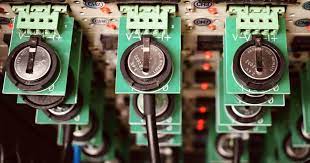
Breaking News
 Turning Point USA to Host Charlie Kirk Memorial at 63,400-Seat State Farm Stadium
Turning Point USA to Host Charlie Kirk Memorial at 63,400-Seat State Farm Stadium
 "TEST Her First!" - Do This BEFORE You Get Married | Charlie Kirk
"TEST Her First!" - Do This BEFORE You Get Married | Charlie Kirk
 AI, Inevitability, & Human Sovereignty
AI, Inevitability, & Human Sovereignty
Top Tech News
 Tesla Megapack Keynote LIVE - TESLA is Making Transformers !!
Tesla Megapack Keynote LIVE - TESLA is Making Transformers !!
 Methylene chloride (CH2Cl?) and acetone (C?H?O) create a powerful paint remover...
Methylene chloride (CH2Cl?) and acetone (C?H?O) create a powerful paint remover...
 Engineer Builds His Own X-Ray After Hospital Charges Him $69K
Engineer Builds His Own X-Ray After Hospital Charges Him $69K
 Researchers create 2D nanomaterials with up to nine metals for extreme conditions
Researchers create 2D nanomaterials with up to nine metals for extreme conditions
 The Evolution of Electric Motors: From Bulky to Lightweight, Efficient Powerhouses
The Evolution of Electric Motors: From Bulky to Lightweight, Efficient Powerhouses
 3D-Printing 'Glue Gun' Can Repair Bone Fractures During Surgery Filling-in the Gaps Around..
3D-Printing 'Glue Gun' Can Repair Bone Fractures During Surgery Filling-in the Gaps Around..
 Kevlar-like EV battery material dissolves after use to recycle itself
Kevlar-like EV battery material dissolves after use to recycle itself
 Laser connects plane and satellite in breakthrough air-to-space link
Laser connects plane and satellite in breakthrough air-to-space link
 Lucid Motors' World-Leading Electric Powertrain Breakdown with Emad Dlala and Eric Bach
Lucid Motors' World-Leading Electric Powertrain Breakdown with Emad Dlala and Eric Bach
 Murder, UFOs & Antigravity Tech -- What's Really Happening at Huntsville, Alabama's Space Po
Murder, UFOs & Antigravity Tech -- What's Really Happening at Huntsville, Alabama's Space Po
Porous membrane saves high-density lithium metal batteries from failure

Scientists at Germany's Friedrich Schiller University in Jena have now demonstrated how a finely tuned carbon membrane can prevent these types of batteries from failure, and enable them to be safely charged over hundreds of cycles.The major problem holding back the development of lithium metal batteries, which could store as much as 10 times the energy of today's lithium-ion batteries, is the formation of needle-like structures called dendrites. During charging, as the lithium ions move between the battery's two electrodes, lithium atoms build up on the negative electrode, known as the anode. This accumulation leads to spiky dendrites that can pierce the separator between the electrodes and cause the battery to short circuit and fail.

 My Response To The Left…
My Response To The Left… 

